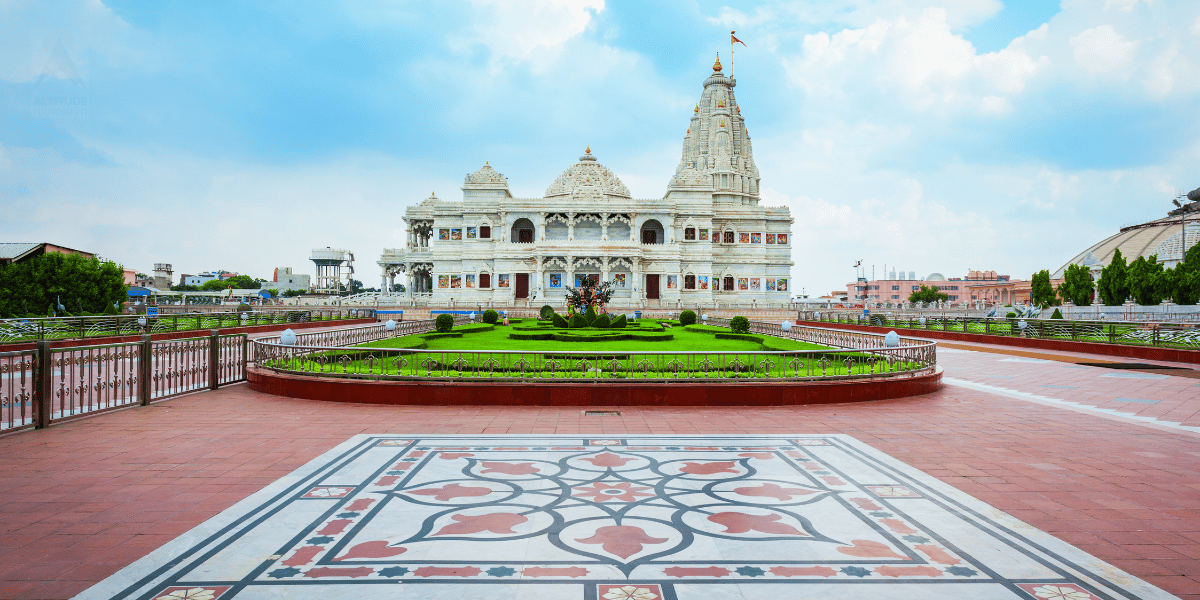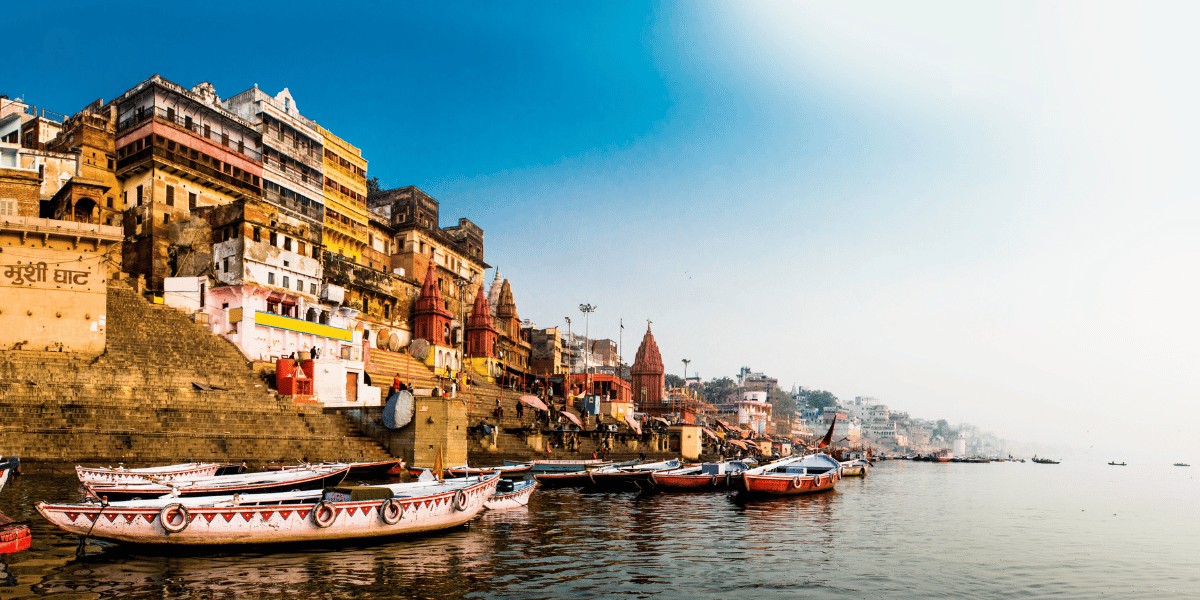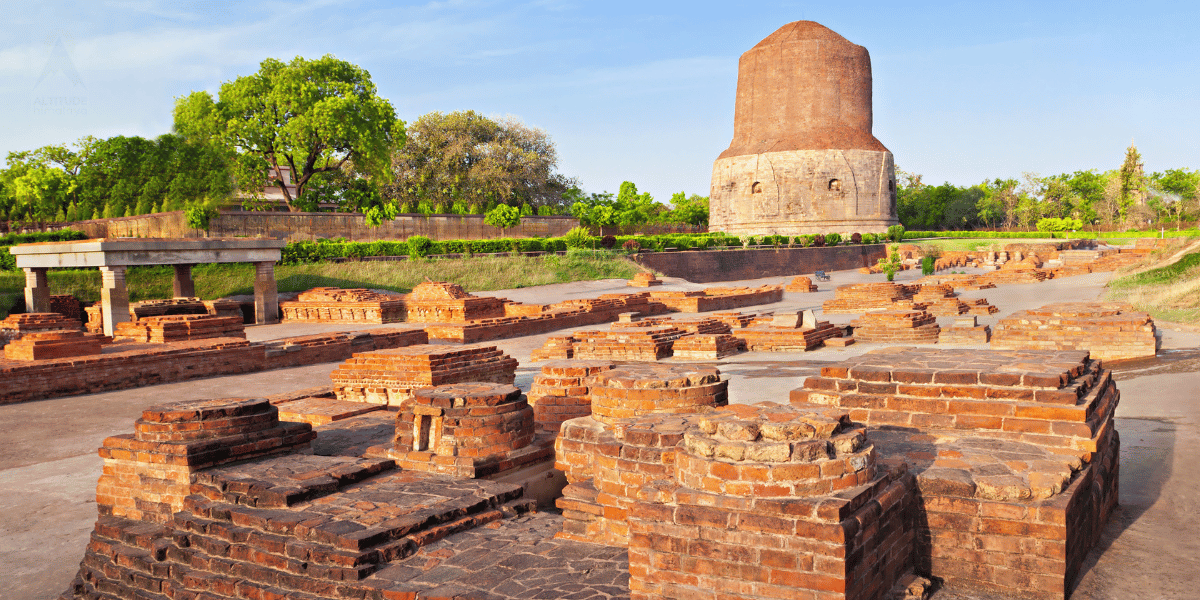Do you want to explore the spiritual side of North India and immerse yourself in the divine and rich culture of various places in India? If yes, then this is the trip for you. Our 13-day North India Pilgrimage Tour is one of the best trips where you can enjoy the diverse culture, geography, tradition, and history all in one trip. This tour offers a rich tapestry of cultural, historical, and geographical experiences that attract countless visitors every year. Culturally, North India is home to a melting pot of diverse traditions and spiritual practices, with numerous sacred sites that attract devotees from various faiths. This region of India has some of the most revered Hindu temples and spiritually significant landmarks. Throughout the trip, you will notice India’s varied landscapes, from the Himalayan mountains to the fertile plains of the Ganges, enhancing the spiritual experience. The tranquil and majestic landscape is often seen as the abode of gods, providing a tranquil and inspiring backdrop for pilgrims. The mixture of cultural richness, historical depth, and natural beauty makes this trip an ideal destination for people seeking spiritual and religious trips. During your trip to India, you have the opportunity to explore and closely see ancient temples and religious places associated with major religious and spiritual aspects for Hindus.
During your North India Pilgrimage Tour, you will visit and stay at various places with beautiful cultures and historical attractions. These places have stunning landmarks dating back centuries, and you will be fascinated with their beauty. Most sites and places you will visit are religious places where you will see glorious temples dedicated to various deities and art styles from different periods and cultures. You will explore some of the major places and attractions below during the tour.
Mathura - Birthplace of Lord Krishna
Located in the northern Indian state of Uttar Pradesh, Mathura, the birthplace of Lord Krishna, is widely known for several compelling factors. It is a renowned pilgrimage destination that attracts devotees from around the globe as it is associated with Lord Krishna, a central deity in Hinduism. This city houses numerous temples, each with the spiritual essence of Krishna’s life and teachings, featuring a rich religious heritage. Such as Dwarkadheesh Temple, where festivals and auspicious occasions take place. The temple was constructed more than a century and a half ago, which beautifully combines the architectural styles of Rajasthan and Mughal. It features exquisite marble carvings that depict the life of Krishna. The temples’ glorious spiritual allure and fascinating historical charm make them an essential destination for anyone interested in exploring Mathura’s vibrant cultural heritage.
Another one is Sri Krishna Janma Bhumi, a complex that features the prison cell where Krishna was believed to have been born, which is now beautifully decorated with intricate carvings and paintings that depict his divine birth. Further, Vishram Ghat is a sacred site situated on the banks of the Yamuna River. According to Hindu mythology, it is believed to be the resting place of Lord Krishna after his victory over his maternal uncle, the tyrant king Kansa. People visit this place to immerse themselves in the sacred waters of the Yamuna River, as the ghat is known for its evening aarti (prayer ceremony) dedicated to Lord Krishna, where the ceremonial lamps are floated on the river as offerings, creating a peaceful and sacred ambience. Next is the Gita Mandir, known for its impressive architecture and gorgeous marble carvings that beautifully portray verses from the sacred text. The tranquil environment of Gita Mandir and its deep connection to the Hindu philosophical essence of the Gita make it one of the most revered religious sites. Last but not least, Radha Kund is the divine site where Radha and Krishna had a profound experience during Radha’s bath in the pond. The area surrounding the pond is filled with temples and ghats, creating a peaceful atmosphere for devotees to meditate and pray. The city’s arctic and architectural heritage is showcased through the intricate carvings and designs of the temples, which add to its beauty.
Vrindavan - City of Widows
Vrindavan is located in Uttar Pradesh, which holds significant Hindu mythology and devotion. This place is best known as the favourite spot of Lord Krishna during his childhood, where he would engage in his divine Leelas (pastime) and captivate devotees with his playful and affectionate activities. Similar to Mathura, Vrindavan is filled with several temples devoted to Krishna and Radha, the divine couple who have a major place in the Bhakti movement. Here you will explore its religious temples, such as Banke Bihari Temple, popular for Lord Krishma’s playful child form in distinctive Tribhanga posture. The temple’s exquisite Rajasthani architecture and serene ambience make it a cherished religious site, providing a deep connection to the divine love of Krishna. Next is the Madan Mohan Temple, a historical temple known for its ancient and peaceful ambience. It is one of the oldest temples in Vrindavan, dating back to the early 16th century, and was established by Sanatana Goswami, a prominent figure and disciple of Chaitanya Mahaprabhu. The landmark is dedicated to Madan Mohan, a form of Krishna known for his enchanting beauty and divine love. The temple's architectural beauty features traditional design elements and intricate carvings, which add charm to India’s rich cultural heritage. Another, Sri Radha Raman Mandir, is known for being home to the unique deity of Krishna, which is believed to have manifested itself from a sacred stone called Saligram Shila. The temple was founded in 1542 by Gopala Bhatta Goswami, one of the six prominent Goswamis of Vrindavan. The temple’s architecture exudes a spiritual ambience with its intricate carvings and serene courtyard. In addition, the temple houses valuable historical manuscripts and relics, which further adds to its importance as a hub of devotion and knowledge. Moreover, Prem Mandir is a truly remarkable temple in terms of both architecture and spirituality. It was established by Jagadguru Shri Kripaluji Maharaj and managed by Jagadguru Kripalu Parishat, which is a testament to the deep devotion and love for Lord Krishna and Radha. It also serves as a hub for cultural and spiritual education, offering a profound opportunity to forge a strong bond with the divine love embodied by Krishna and Radha. Last but not least, ISKCON Temple, referred to as the Sri Krishna Balaram Mandir, holds great spiritual importance and is a popular destination among pilgrims. The temple was founded in 1975 by Bhaktivedanta Swami Prabhupada as a tribute to Lord Krishna and his elder brother, Balaram. The town’s enduring charm is rooted in its connection to Krishna’s divine love and teachings.
Agra - The City of Love
Located in northern India Agra is a popular city best known for its cultural heritage and impressive architecture. These places are well-known for their iconic landmarks and great history, and while you are here, you will visit two of the best and most beautiful monuments. Starting with the iconic Taj Mahal. It is the world’s seventh wonder and is known for its stunning beauty, majestic architecture, and glorious history. The great architecture is a mauseoleum, which was constructed in the 17th century by Mughal Emperor Shah Jahan as a tribute to his beloved wife, Mumtaz Mahal. The entire architecture stands as a symbol of eternal love and devotion. Next is Agra Fort, a renowned historical site best known for its fascinating history, impressive architecture, and cultural importance. The Great Fort is a true example of the architectural brilliance of the Mughal Empire, constructed primarily out of red sandstone. The fort was built in the 16th century, under the rule of Emperor Akbar. The complex is surrounded by imposing walls and features a collection of palaces, mosques, and halls, all beautifully decorated with intricate carvings and inlay work. Besides these glorious attractions, Agra continues to be people’s favourite tourist spot, attracting thousands of tourists worldwide.
Orchha and Khajuraho Attractions
Orchha is another charming town in Madhya Pradesh, popular for its rich history, breathtaking architecture, and tranquil natural beauty. There are wonderful attractions inside the city where you will explore the historical beauty, starting off with Phool Bagh, known for its rich historical importance, fascinating architectural beauty, and peaceful ambience. The Bundela kings thoughtfully designed the tranquil garden complex, which dates back to the 17th century, as a serene getaway for relaxation. Phool Bagh is a stunning garden filled with lush greenery, vibrant flower beds, and elegant fountains that add to the garden's beauty. Next is the Orchha Fort Complex, a true marvel, featuring architectural wonders that seamlessly blend with Mughal and Rajput influences. Built-in the 16th century by the Bundela Rajput ruler Rudra Pratap Singh, the fort complex comprises a series of gorgeous palaces, temples, and other beautiful structures that showcase the grandeur of mediaeval Indian architecture. Further, Laxminarayan Temple is a well-known combination of temple and fort construction that reflects an intriguing fusion of religious and military aspects. Constructed in 1662 by Bundela King Vir Singh Bedo, the monument is notable for the exquisite murals that cover its walls and its unique structural layout. The paintings provide a visual trip across time and culture by vibrantly illustrating events from Indian mythology, folklore, and even real events. Last but not least, the Raja Ram Temple, dedicated to Lord Rama, is a monarch rather than a deity in a few places in India, which makes the Raja Ram temple in Orchha particularly notable. The architecture of the landmark blends with regal and religious aspects, reflecting the metamorphosis. People are drawn to the temple's imposing exterior, which features elaborate carvings and tall spires. Besides the attraction, the town provides breathtaking views and a peaceful atmosphere, along with the Indian cultural landscape, rich history, spiritual significance, and wonderful natural beauty.
Another amazing place you will visit is Khajuraho, a small town in Madhya Pradesh with a beautiful collection of mediaeval Hindu and Jain temples known throughout the world for its gorgeous architecture and detailed sensual sculptures. Established by the Chandela dynasty between 950 and 1050 AD, the temples provide the exceptionally creative and cultural achievements of that era. There are three groups of temples which are Western, Eastern, and Southern. The best-known and best-preserved group is the Western group. The temple’s sculptures represent a wide range of themes in life, including spirituality, love, and interpersonal relationships. It was cherished for an open-minded view of intimacy at the time.
Chitrakoot and Allahabad Attractions
Further, Chitrakoot is a small village that is popular from a religious, historical, and cultural standpoint. The village is linked to the epic Ramayan, making it a highly important pilgrimage site. It is said that during the fourteen-year exile of Lord Rama, his brother Lakshmana and his wife Sita spent eleven and a half of those years in Chitrakoot. There are many temples and holy places scattered across the town, which you will visit and explore. Starting from Ramghat on the Mandakini River, where devotees gather to carry out rites and take a dip in the sacred waters. The shrine dedicated to Bharat Milap also honours the reunion of Lord Rama and his brother Bharat. With its verdant forests and peaceful riverbanks, Chitrakoot's soothing natural beauty adds to the area's meditative atmosphere and draws pilgrims. The next one is Kamadgiri, a revered sacred pilgrimage site in Hindu mythology. The name ‘’Kamadgiri’’ translates to ‘’fulfiller of desires’’ symbolising it as a place where people seek blessings and fulfilment of their wishes. Further, Janaki Kund is a revered pilgrimage site associated with the epic Ramayana. The tranquil pond is believed to be the bathing spot of Sita, the consort of Lord Rama. People visit Janaki Kunda to perform rituals, meditate, and immerse themselves in the mythological significance of the site, making it a cherished destination. The last one is Sati Anusuya Ashram, an important spiritual destination with a rich mythological heritage and a calm ambience. The ashram is dedicated to Sati Anusuya, the wife of Sage Atri, revered for her devotion. According to Hindu mythology, Sati gave birth to Dattatreya, who was created by transforming the Hindu trinity of Brahma, Vishnu, and Shiva into infants to teach them lessons about humanity. The city's natural beauty and deep-rooted connections to the epics of the Ramayana and Hindu traditions.
Another one is Allahabad, officially known as Prayagraj, a prominent city in India with deep historical, cultural, and religious significance. The city is known for many attractions, such as Triveni Sangam, a junction of the three sacred rivers: the Ganges, Yamuna, and the mythical Saraswati. It is a major pilgrimage site for Hindus, especially during the Kumbh Mela, the largest religious gathering in the world held every twelve years. Another one is Hanuman Temple, also known as Bade Hanuman Ji Mandir. One of the temple’s most fascinating aspects is the statue of Lord Hanuman in a reclining posture, which is rare among Hanuman temples.
Further is Anand Bhavan, a prominent landmark known for its rich historical and political significance. It was the residence of the Nehru family, one of India’s foremost political dynasties, which has contributed to many pivotal moments in the country’s struggle for independence. The mansion is now a museum, featuring the life and legacy of Jawaharlal Nehru, India’s first Prime Minister, and his daughter Indira Gandhi. Last but not least is Swaraj Bhawan, now known as Prayagraj, which was owned by Motilal Nehru, a prominent figure during the independence movement. Today, this landmark serves as a museum showcasing the life and legacy of the Nehru-Gandhi family. The city’s rich history dates back to ancient times as well, with references in sacred texts and its role as a significant centre during the Mughal era, which was under Emperor Akbar. This city is also known for its colonial architecture, educational institutions like Allahabad University, and its connection with India’s independence movement and historical figure's birthplaces.
Varanasi - Religious Capital of India
Next is Varanasi, also known as Kashi or Banaras, which is one of India’s oldest and most revered cities, known for its profound spiritual and cultural significance. Located on the banks of the sacred Ganges, Varanasi is recognised as the holiest city in Hinduism, where thousands of devotees come to perform religious rituals. Here you will explore and visit some of the most iconic temples and religious sites, such as Vishwanath Temple, also known as Kashi Vishwanath Temple, one of the most revered and popular Hindu temples in Varanasi. It is dedicated to Lord Shiva and holds immense religious significance, as it is considered one of the twelve Jyotirlingas, which are the holiest Shiva temples. The temple is situated on the western banks of the holy river Ganges, adding to its spiritual importance. The next one is Annapurna Temple, dedicated to Goddess Annapurna, the deity of food and nourishment. The temple's architecture features ornate carvings and vibrant colours, reflecting the heritage and artistic traditions of the region. Next on the list is Bharat Mata Temple, a unique temple known for its distinctive dedication not to any deity but to Mother India. Unlike other traditional temples, it houses a large relief map of India carved out of marble, representing the geographical and cultural diversity of the country.
Another amazing, spiritually rich place you will visit is Sarnath, located near Varanasi and popular for its profound historical and religious significance, particularly in Buddhism. This place is where Gautam Buddha delivered his first sermon after enlightenment, known as the Dhammacakkappavattana Sutta, setting in motion the wheel of Dharma. Here you will visit places such as Dhamekha Stupa, Chaukhandi Stupa, and the Archaeological Museum, known for their wonderful history and spiritual aspects of Buddhism. The Dhamekha Stupa marks the spot where Gautam Buddha delivered his first sermon, initiating the spread of Buddhism. The Chaukhandi Stupa is the place where Buddha got his first disciple. The Archaeological Museum houses artefacts and relics from the ancient Buddhist era, providing insight into the rich cultural heritage of Sarnath. The city’s lively streets and rich traditional music, art, and cuisine make it a unique place. You will find an amazing blend of spirituality, history, and culture, making Varanasi an important pilgrimage site.
Ayodhya - Birthplace of Lord Rama
Ayodhya is located on the northern side of India and is known for its deep-rooted spiritual and historical importance. It is the birthplace of the revered Hindu deity Lord Rama and the setting for the ancient glorious Ramayan. Ayodhya houses numerous temples and various religious sites with great history and religious importance. You will visit most of them, starting with Ram Janmabhoomi Temple, one of the most notable temples, which is believed to be the birthplace of Lord Rama. Another one is Moti Mahal, a stunning palace featuring the architectural grandeur of the region. Similarly, Hanuman Garhi is a beautiful temple dedicated to Lord Hanuman, which people visit to get protection and blessings. Last but not least is Kanak Bhawan, which is dedicated to Rama and Sita and has beautiful architecture with golden idols of the deities. These sites are not just attraction sites but spiritual and cultural heritages. Besides its religious importance, Ayodhya has been at the centre of historical and political developments, especially the Ram Janmabhoomi movement. The combination of its mythological, historical events, and other factors makes it an important destination for people all over the world.
Delhi - The Captial City
Last but not least is Delhi, the capital of the country, known for its rich history, cultural diversity, and political significance. Delhi is quite popular for its vibrant culture, hustle and bustle, and historical landmarks. While you are here, you will visit some of the prominent places, such as the Red Fort, a beautiful landmark in Delhi known for its historical, architectural, and cultural importance. Constructed by the Mughal Emperor Shah Jahan in the mid-17th century, it served as the prominent residence of the Mughal emperors for almost 200 years. The fort is enclosed by massive red sandstone walls featuring an amazing Mughal architectural style that blends Persian, Timurid, and Indian architecture. Next is Jama Masjid, located in the centre of Old Delhi, which is one of the largest and most renowned mosques in India. Built between 1644 and 1656, it is the greatest Mughal architecture, with three large domes, four towers, and two 40-metre-high minarets providing panoramic views of Delhi. This amazing landmark can accommodate nearly 25,000 people at a time, making it one of the most prominent and largest mosques in the country. Next is Chandni Chowk, an ancient market area rather than any specific landmark or monument established in the 17th century, which openly represents Delhi’s abundant culture and heritage. The area has narrow alleys with several shops where one can find a range of items and products, such as spices, clothes, and decorative handmade products. Further is Raj Ghat, also known as the Gandhi Memorial, a memorial site for Mahatma Gandhi, father of the nation. Here, the last rituals of Mahatma Gandhi were done in 1948. Here, special ceremonies are held on Gandhi’s birth and death anniversaries, reinforcing its status as highly respected in India.
Another one is India Gate, one of India’s most iconic monuments, which is also a symbol of national pride. Constructed in 1931, this spectacular monument is a memorial dedicated to the deceased Indian soldiers who lost their lives during World War I. The next one is Humayun's Tomb, a magnificent historical monument known for exquisite Mughal architecture. Built in 1570 by Empress Bega Begimin in the loving memory of her husband, Humayun, the second Mughal emperor of India. This landmark is listed as a UNESCO World Heritage Site, where one can see intricate craftsmanship blending Persian, Turkish, and Indian designs. The memorial is set in the centre of the vast garden known as a charbagh, which is divided into four parts by walking and water channels. Last but not least is Qutub Minar, another stunning historical landmark. The monument stands tall at 73 metres, a remarkable example of the mediaeval era's architectural skill. Qutub-ud-Din Aibak started it’s construction in 1199 and was completed in 1220 by his son-in-law Iitutmish, commemorating the beginning of Muslim rule in India. Besides India’s historical and cultural attractions, you can also explore the contemporary attractions, which include modern shopping malls, world-class restaurants, and entertainment venues where you can have some quality time.
What to Expect?
Our North India Pilgrimage Tour to the northern part of India provides a unique experience in profound spiritual heritage and diverse religious sites. This 13 days tour takes you to some of the most sacred and ancient places for various believers. Starting in Dehli, your trip starts taking you all the way to Ayodhya, the birthplace of Lord Rama, slowly exploring other religiously significant places on the way. This tour welcomes people from all walks of life and interests as one can witness the glorious past through the preserved architecture and fascinating mythology, which are the backbones of today's rich culture and heritage. The rich tapestry of religious traditions and the spectacular natural ambience make this tour unique from other pilgrimage trips in India. This tour provides you with an opportunity to fully immerse yourself in the spiritual heritage and diverse religious sites that North India offers. During the span of 13 days, you will visit and stay in various places and cities, each with stunning historical stories and immense historical and cultural significance. From the hustle and bustle of Delhi to the birthplaces of two revered deities in Hinduism, Lord Krishna and Rama, you will visit them all. Similarly, historical cities such as Agra, home to the seventh wonder of the world, the iconic Taj Mahal, and important Mughal- era mosques, will take your breath away. After the historical splendour, you will move towards Khajuraho, known for its stunning group of Hindu and Jain temples adorned with intricate sculptures that will blow your mind.
Moving on to Chitrakoot, where you will observe tranquil spiritual retreats and the tails of the epic Ramayan. Places like these will relax you and encourage you to start a spiritual journey of your own. After witnessing the beauty of Chitrakoot, you will head towards Allahabad, also known as Prayagraj, where the Khumbh Mela takes place. It is one of the biggest Hindu festivals that takes place once every 12 years. Also, this is where you will get to see three holy rivers mix together, which are the Ganges, Yamuna, and the serene Saraswati rivers. At the end of your trip, you will visit Varanasi, the oldest living city with ghats on the banks of the Ganges, where people spiritually cleanse their sins and perform the last ritual of humans in Hinduism. Throughout the journey, you will be fascinated by the things you see and experience, as most of the places are linked to deep spiritual and religious aspects, making it a beautiful trip for a relaxing vacation with friends and family.
This tour is perfect for those who want to explore, see the historical beauty of India, and experience the richness of this vibrant country firsthand. This trip is ideal for all age groups. There are multiple things to see and explore, including ancient monuments, ancient temples, and tranquil ambience where one can relax and enjoy the moment. Throughout the trip, you will be amazed by the things that you see, as this is one of the most relaxing and comfortable trips where you will see breathtaking monuments and walk through the places once believed to be walked by the deities themselves. From holy ghats to bustling local markets, this trip is a combination of thrilling experiences that you can hardly find anywhere else. Join us on a trip where you will see the true beauty of India beyond the chaos towards calmness.


 Adventure
Adventure
 Couple
Couple
 Family
Family
 Luxury
Luxury
 Motorbike
Motorbike
 Photography
Photography
 Wildlife
Wildlife
 Yoga
Yoga
 Annapurna
Annapurna
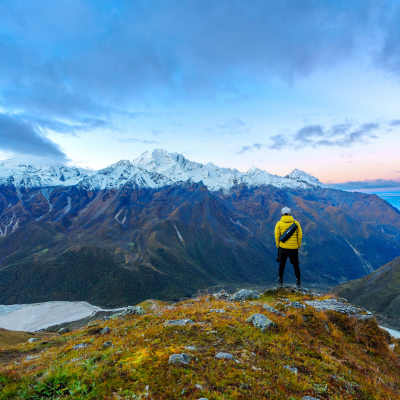 Langtang
Langtang
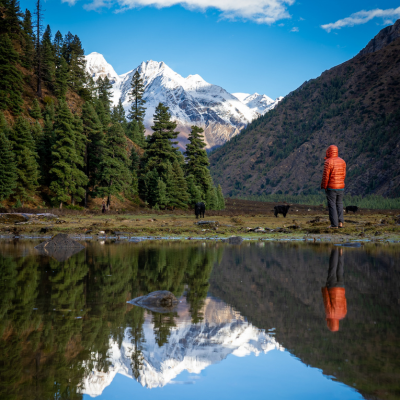 Dolpo
Dolpo
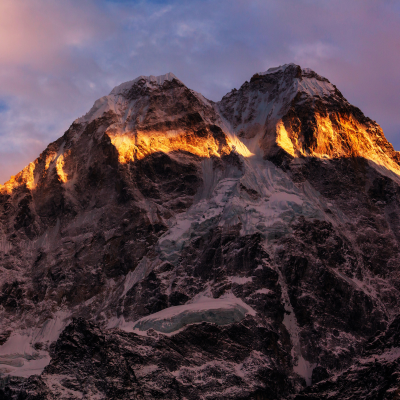 Eastern Nepal
Eastern Nepal
 Everest
Everest
 Manaslu
Manaslu
 Western Nepal
Western Nepal
